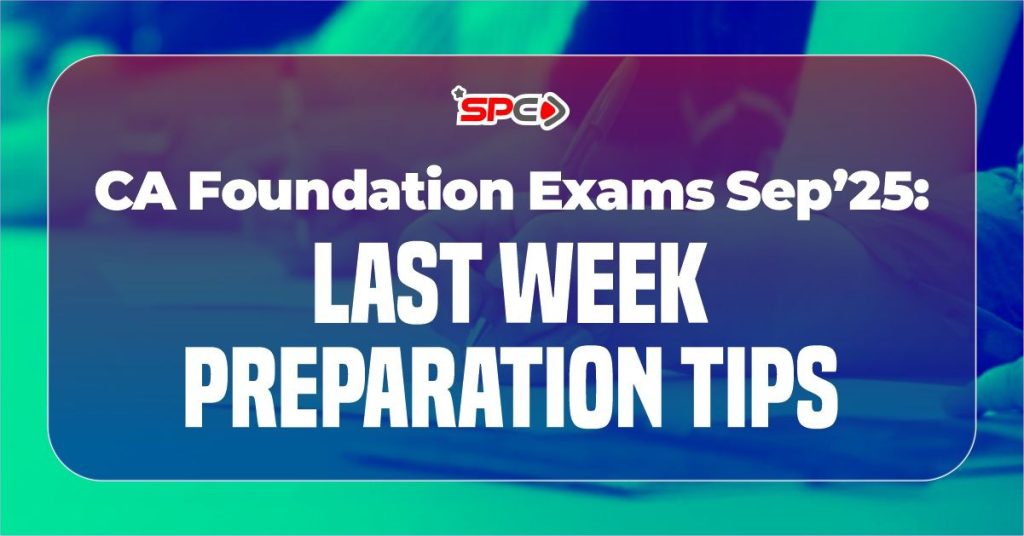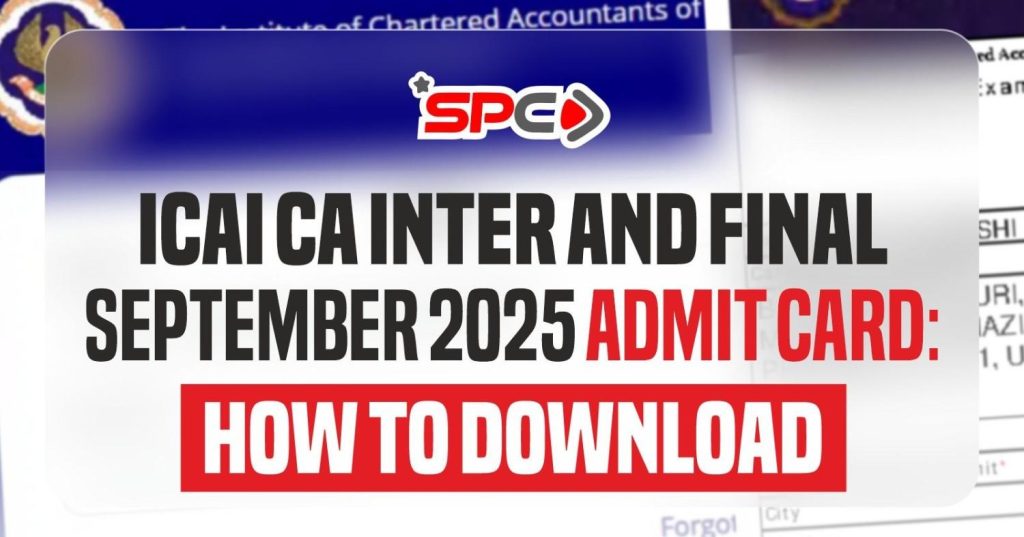The Chartered Accountancy (CA) Foundation exam is the gateway to becoming a certified Chartered Accountant in India. Administered by the Institute of Chartered Accountants of India (ICAI), the CA Foundation is the first level in the CA journey.
The 2025 pattern introduces structured formats, refined assessment types, and enhanced emphasis on conceptual clarity.Let’s take a deep dive into each component of this exam.
Overview of the CA Foundation Examination
The CA Foundation exam is conducted thrice annually—in January, May/June, and September. Candidates from commerce and non-commerce backgrounds can appear for the exam post-12th grade.
Key Highlights:
- Mode: Offline (Pen-and-paper based)
- Level: Entry-level for Chartered Accountancy
- Attempts per Year: 3
- Total Papers: 4
- Total Marks: 400 (100 marks per paper)
Detailed Paper Structure for CA Foundation Exam
The exam is divided into four papers, each with specific formats and objectives.
Paper 1 – Accounting
- Type: Subjective
- Duration: 3 hours
- Objective: Test the conceptual foundation and application of accounting principles.
Topics Covered:
- Accounting standards and principles
- Depreciation, inventories, and rectification of errors
- Partnership accounts and company accounts
- Not-for-profit organization accounting
This paper builds the foundation for understanding financial reporting in later stages.
Paper 2 – Business Laws
- Type: Subjective
- Duration: 3 hours
- Medium: Only Section B (Business Correspondence & Reporting) must be answered in English
- Objective: Assess knowledge of key legal frameworks and communication in business.
Topics Covered:
- Indian Contract Act, 1872
- Sale of Goods Act, 1930
- Indian Partnership Act, 1932
- LLP Act, 2008
- Business correspondence: letters, reports, emails, notes
This paper is essential to develop legal and communication acumen in business environments.
Paper 3 – Quantitative Aptitude
- Type: Objective (MCQs)
- Duration: 2 hours
- Negative Marking: Yes (–0.25 for each wrong answer)
- Objective: Test numerical proficiency and analytical reasoning.
Paper Division:
- Part A – Business Mathematics (40 marks)
Topics: Ratios, percentages, indices, time value of money, annuities - Part B – Logical Reasoning (20 marks)
Topics: Coding-decoding, direction sense, syllogism, number series - Part C – Statistics (40 marks)
Topics: Mean, median, mode, correlation, regression, probability
Regular practice of MCQs is essential due to the penalty for incorrect answers.
Paper 4 – Business Economics
- Type: Objective (MCQs)
- Duration: 2 hours
- Negative Marking: Yes (–0.25 for each wrong answer)
- Objective: Assess understanding of economic principles and commercial application.
Topics Covered:
- Microeconomics: Demand and supply, elasticity, pricing
- Macroeconomics: National income, inflation, public finance
- Business environment, commercial institutions, Indian economy basics
Understanding real-world business dynamics through this paper prepares students for strategic decisions in accounting.
CA Foundation Marking Scheme and Language Options
Marking Structure:
- Papers 1 & 2 (Subjective): No negative marking
- Papers 3 & 4 (Objective): –0.25 for each wrong answer
Language:
- Medium: English or Hindi (except for Section B of Paper 2)
- Students must choose their preferred language during registration.
This dual-format assessment tests both expressive writing skills and precision-based problem-solving.
CA Foundation Exam Sep 2025 Minimum Passing Criteria
To qualify the CA Foundation exam, students must:
- Score a minimum of 40% in each paper, and
- Achieve at least 50% aggregate (200 out of 400 marks) across all four papers
Failing either of these criteria results in reappearing for the full exam, even if one or two papers are cleared.
CA Foundation Exam 2025 Syllabus Overview
Paper 1 – Accounting
- Basic accounting principles
- Financial statements
- Accounting for special transactions (bills of exchange, consignment, etc.)
- Partnership accounts
- Company accounts
Paper 2 – Business Laws
- Contract law in-depth
- Sale and purchase of goods
- Rights and duties in partnerships
- Written communication in a business setting
Paper 3 – Quantitative Aptitude
- Business Math: Time value of money, ratios, and interest
- Logical Reasoning: Puzzle solving, logic patterns
- Statistics: Graphs, averages, central tendencies, permutations
Paper 4 – Business Economics
- Introduction to micro and macroeconomic theory
- Cost and revenue analysis
- International trade basics
- Role of government in economic regulation
These topics are updated to reflect evolving industry practices, business laws, and analytic methods.
What’s New in the CA Foundation 2025 Pattern?
- Revised Syllabus: Aligned with global trends and job relevance
- More Objective Questions: Ensures practical and application-based evaluation
- Balanced Focus: Descriptive + MCQ structure balances communication and calculation skills
- Shorter Exam Cycles: Three exam windows annually, reducing waiting time for reattempts
CA Foundation Exam Sep 2025 Eligibility Criteria
- Must have passed Class 12 from a recognized board.
- Provisional registration allowed post-Class 10.
- Minimum 4 months of study period before exam month.
- Registration validity: 3 years (can be revalidated once for another 3 years)
How to Prepare Effectively
For Subjective Papers:
- Practice long-answer writing
- Focus on understanding and explanation, not rote learning
- Solve previous years’ question papers
For Objective Papers:
- Take regular MCQ tests
- Practice with time limits
- Avoid guesswork due to negative marking
Join Swapnil Patni Classes for Affordable CA Foundation Courses
If you’re looking for quality education that fits your budget, Swapnil Patni Classes offers a perfect blend of affordability and academic excellence for CA Foundation aspirants.
With a student-centric teaching methodology, expert faculty, and concept-based lectures, the institute ensures students develop a solid understanding of all core subjects.
Their flexible course delivery, whether online or offline, helps students learn at their own pace, making it an ideal choice for beginners aiming to crack the CA Foundation exam with confidence.





